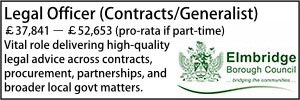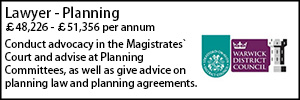The £5bn Pride in Place programme – what does it mean for local authorities?
Alexander Rose sets out the main elements of the Pride in Place Programme, including potential sticking points in areas such as accountability that may emerge for local authorities supporting the delivery of the programme.
- Details
On 25 September 2025, Sir Keir Starmer launched the "Pride in Place Programme" - an ambitious 10-year fund that aims to give 339 communities across the country "the resources and tools to drive change themselves".
The fund is novel in that decision making will be led by local people. However local authorities are expected to act as accountable bodies. What this means in practice is that local government is expected to oversee the compliance of projects developed using the funding and in certain situations recover funding if found to have been misspent.
What is the Pride in Place Programme?
The Pride in Place Programme was announced by the Labour government on 25 September 2025 as a means to address some of the most pressing local issues within 339 of the UK's most deprived neighbourhoods. Stated to be worth £5bn, the fund aims to give "communities the resources and tools to drive change themselves".
The fund will see "residents, local businesses, civil society and community organisations" lead upon decision making "working in partnership with their respective local authority". Therefore it will be local people who decide the projects that they think are best to "rebuild and transform their neighbourhoods".
Which areas have been chosen for funding?
The areas chosen for funding have been selected using data identifying levels of deprivation. Although the neighbourhoods in Scotland and Wales have yet to be specified, in England the areas with three or more awards are listed below:
|
Local authority |
Neighbourhoods benefiting from funding |
|
Birmingham |
Hawkesley; Druids Heath; Glebe Farm; Kingstanding South East; Woodgate; Sparkbrook North; Fox Hollies; Nechells |
|
Liverpool |
Speke East; Everton East; Norris Green East; Fairfield West & Newsham Park |
|
Manchester |
Benchill South & Wythenshawe Central; Hapurhey South & Monsall; Clayton Vale; Gorton South |
|
Leeds |
Middleton Park Avenue; Seacroft North & Monkswood; Farnley East; Armley & New Wortley |
|
Kingston upon Hull, City of |
Orchard Park; Greatfield; Boulevard & St Andrew’s Quay |
|
Wirral |
Birkenhead Central; Seacombe; Woodchurch |
|
County Durham |
Peterlee East; Stanley South; Crook North & Tow Law |
|
Leicester |
Eyres Monsell; Braunstone Park West; Thurnby Lodge |
|
North Northamptonshire |
Corby Kingswood; Queensway (North Northamptonshire); Kettering Avondale Grange |
|
Cumberland |
Raffles & Morton; Flimby, Ellenborough & Broughton Moor; Mirehouse, Kells & Woodhouse |
|
Doncaster |
Conisbrough North; New Rossington; Mexborough West |
What is the link to the Plan for Neighbourhoods initiative?
The government has been open that £1.5bn of this funding was previously announced in March 2025. At the time the programme was called 'Plan for Neighbourhoods'.
Under this initiative seventy five deprived neighbourhoods across the UK were awarded £20m each to deliver projects to improve "the physical and social infrastructure of their community and deliver tangible improvements to the everyday lives of these communities".
Each of the chosen areas was tasked with establishing a Neighbourhood Board to develop a 10-year Regeneration Plan, setting out how the £20m of public funding would be spent.
Projects put forward had to align with one or more of three core objectives:
- to build stronger communities – all places should have strong relationships and a collective sense of belonging to their community. This helps bring people together to build community cohesion and resilience, helping people to feel proud of their area and safe in their neighbourhood.
- to create thriving places – every part of the UK deserves to have vibrant neighbourhoods and communities with busy high streets, a good range of local amenities and high-quality physical infrastructure.
- to empower people to take back control – everybody should be empowered and in control of their lives and have a say over the future of their community.
Even though the 75 areas to benefit from the Plan for Neighbourhoods programme were announced in in March 2025, the fund is only now taking shape with Neighbourhood Boards needing to submit their Regeneration Plans to MHCLG in the coming weeks ahead of the delivery phase starting in April 2026.
The delivery of the fund has been affected by governance concerns. Although the programme aims to be flexible and wants to draw upon local expertise to resolve longstanding issues affecting communities, it is also recognised that appropriate safeguards around public money need to be in place.
The government has had to explicitly state that Neighbourhood Boards will need to work in lockstep with local councils acting as an accountable body.
It has been necessary to publish guidance that states that "the relevant local authority in each place will act as the accountable body for the funds with responsibility for ensuring that public funds are distributed fairly and effectively, and that funds have been managed in line with the Nolan Principles and Managing Public Money principles". This guidance goes on to state that "accountable bodies may need to recover funding from project deliverers where subsidy control or state aid law has not been complied with" and "work closely with their place’s Neighbourhood Board to develop and embed appropriate processes and controls for funding".
Therefore although the fund is intended to be light touch and locally led, public authorities have had to provide support to ensure that public money is spent in line with the relevant rules.
How will this additional funding work?
Of the new funding, the lion's share (up £4.88bn) is designed to be very similar to the Plan for Neighbourhoods initiative (but the entire fund will now be called the Pride in Place Programme). At further 169 locations have been chosen (under a methodology that studied levels of deprivation) and each will receive an allocation of up to £20m.
This is to be spent upon projects that advance the core objectives of building stronger communities, creating thriving places and empowering people to take back control.
The prospectus states that the fund will "put decision-making power in the hands of local people, so those most affected call the shots".
Pointedly it expressly avoids referring to Neighbourhood Boards and instead states "government will work across departments to ensure this funding is a catalyst for these communities to have a say in the services delivered locally and we will work with external partners – including philanthropists, social investors and socially-minded businesses – to crowd in extra funding and activity".
Conclusion
The Pride in Place Programme prospectus includes a quote: "We know what we need in this area.” This is true - regeneration projects tend to work better when they are designed with the benefit of local knowledge and delivered with the support of the local community. However, a balance needs to be struck and it may well fall to local councils or combined authorities to be accountable for ensuring that such projects align with the relevant law.
Alexander Rose is a partner at Ward Hadaway.
Trust Solicitor (Employment & Contract Law)
Lawyer - Property
Senior Lawyer - Contracts & Commercial
Contracts & Procurement Lawyer
Locums
Poll







































